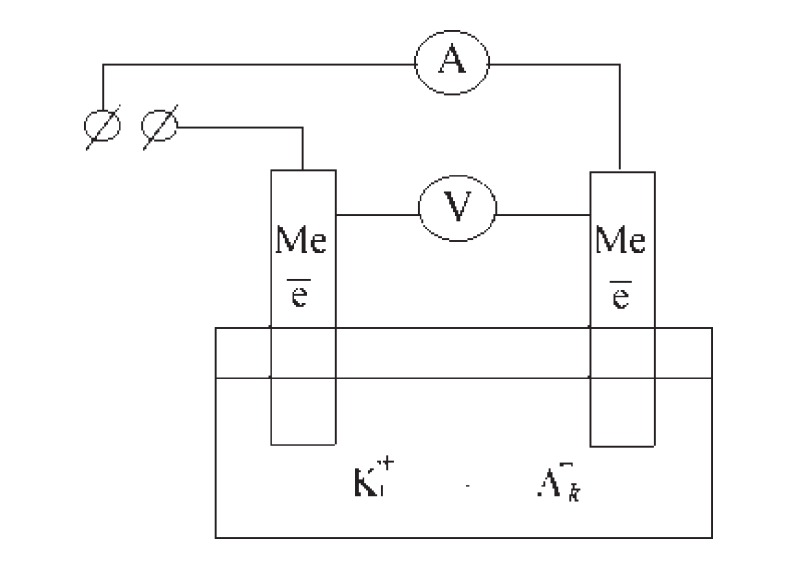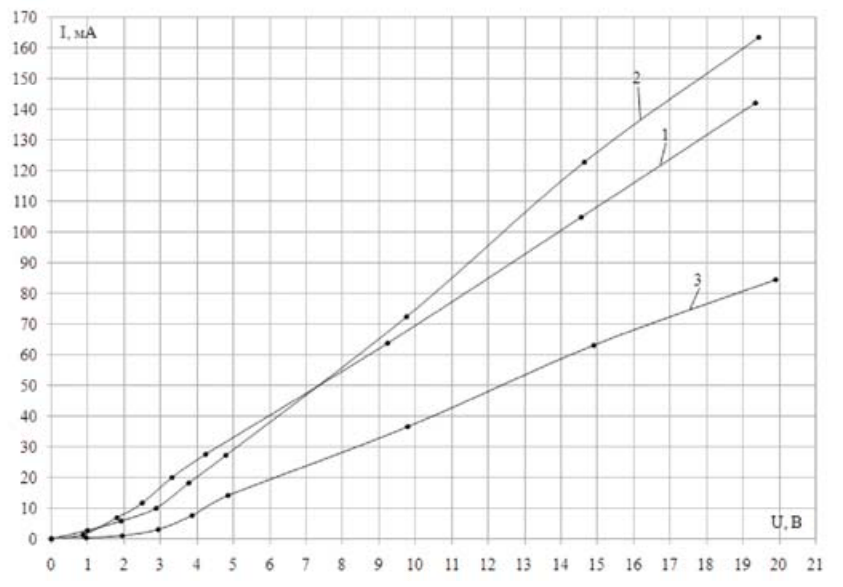|
|
Electrophysical properties of cultivated mushrooms
The article presents experimental studies of the electrophysical properties of cultivated mushrooms. During the study, changes in the electrophysical parameters of mushroom plasma (current strength, resistance and current density) were established. The obtained experimental data can be used as identification criteria in the examination of the quality of cultivated mushrooms.
The physical properties that play an important role in determining the quality of goods include: density, structural-mechanical, optical, thermophysical, sorption properties, etc. Much attention is also paid to the electrophysical properties of products. The obtained measurement results allow us to draw a conclusion about the quantitative and qualitative composition of substances capable of conducting current, and can act as identification criteria when conducting an examination of the quality of cultivated mushrooms. Many scientists were engaged in the study of the chemical composition, cultivation, storage and processing of cultivated mushrooms. Regarding the above studies in the field of examination of the quality of cultivated mushrooms, their practical absence can be noted. At the moment, the identification and examination of quality is carried out organoleptically according to known morphological features, and also determine the physico-chemical indicators provided for by regulatory documents for a certain type of fungus. Therefore, one of the topical aspects is the development and improvement of approaches to the examination of the quality and identification of cultivated mushrooms. Based on this, the purpose of this work was to determine the electrophysical properties of plasma from cultivated mushrooms, as well as food products based on them. The object of the study was cultivated mushrooms, which are in the greatest demand on the market, as well as food products based on them. The subject of the study was the electrophysical properties of the samples under study. Measurement of the electrophysical properties of the liquid phase was carried out on a setup, the scheme of which is shown in Fig. 1. On the installation were placed electrodes made of metal (Me) and having, respectively, electrical conductivity. The liquid phase was placed between the electrodes and had ionic conductivity: Ki + - cations, Ak - - anions (see Fig. 1).
The formation of cations and anions is associated with the dissociation of simple electrolytes (salts, alkalis, acids) and high molecular weight polyionites (substances of organic origin). The measurement procedure was as follows: the studied fungal plasma with a volume of 20 ml was placed in a measuring cell. The wetting area of the electrodes was 4x104 m2. The voltage on the electrodes was changed from 0.1 to 20 V using a direct current source. The current strength was recorded by a milliammeter (mA). Resistivity was calculated based on Ohm's law. The basis of scientific research and the achievement of the set goals was the scientific assumption that the substances that characterize the species of any food product are in dissolved or undissolved states, that is, they are contained in the solid or liquid parts of the product. For this purpose, it was proposed to introduce the operation of preliminary preparation of mushrooms before conducting the study, i.e., to divide the studied species of fungi into phases. The introduction of this operation also contributes to the adaptation of the selected object of study to the specifics of the chosen methodology. The first step in preparing the object of study for analysis was the grinding of mushrooms to a puree-like mass and further separation into phases. The efficiency of separating the product into phases is possible by several methods. Traditionally, pressing is used, but separation under the action of centrifugal forces is more effective. Under laboratory conditions, for this purpose, a centrifuge with a rotation speed of 5000 rpm was used, the centrifugation time was 15 min. As a result of this operation, a liquid phase of mushrooms was obtained - mushroom plasma (a colloidal system similar to blood plasma containing dissolved substances, which is obtained by separation in separator centrifuges and a solid - mushroom cake. The next step was freezing the obtained phases. The freezing process contributes to a more complete separation, since in the process of lowering the temperature, the formation of associates and their subsequent removal during centrifugation occurs. As a result of the four-fold cycle of these operations, it was noted that no separation occurs in any of the fractions, i.e. the resulting systems are characterized by thermal reversibility - a process without losses from the implementation of mechanical, thermal and other types of system resistance. After preliminary preparation, a direct measurement of the determined electrophysical parameters was carried out. On fig. Figure 2 shows the volt-ampere characteristics of plasmas from different types of cultivated mushrooms.
An analysis of the obtained graphs shows that there is a pronounced non-linearity of these characteristics, in addition, three characteristic sections of the characteristics are observed. Such current-voltage characteristics are inherent in non-linear electrical circuits. In such circuits, the nonlinearity is due to the electrochemical interaction of electrolytes. Differences between the electrical conductivity of the studied species of fungi were noted. So, for the plasma of champignons, this value is the largest, and for the plasma from shiitake mushrooms, it is the smallest. It was also noted that in each of the designated areas, the resistivity and current density are different. We studied the kinetics of the current in relative units at a constant voltage. This type of research will make it possible to determine the nature of the current fall rate in different plasmas, which may indicate the nature of the ions contained in them. It has been established that a certain period of time is required to establish a constant current strength. Obviously, this is due to the fact that the liquid phase of fungi contains ions of various nature: organic and inorganic origin. Such a system is characterized by the fact that during the relative motion of ions with a low mass (low molecular weight compounds) and with a large mass (high molecular weight compounds), the former are bound by Coulomb forces, which leads to a limitation of the mobility of low molecular weight ions and the current strength decreases. Thus, in the course of the study, changes in the electrophysical parameters of mushroom plasma (current strength, resistance and current density) were established. The obtained experimental data and patterns can be used as identification criteria in the examination of the quality of cultivated mushrooms.
Key words: cultivated mushrooms, electrophysical properties, identification criteria, quality examination, freezing. Abstract: the article is devoted to the study of electrophysical properties of plasmas from cultivated mushrooms. The current strength of the liquid phase of fungi was calculated depending on the different voltage values, the kinetics of the current strength at a constant voltage, and the resistivity. It has been proved that electrophysical properties make it possible to determine the qualitative composition of mushroom plasma, which can later be used as identification criteria when conducting an examination of the quality of cultivated mushrooms and food products from them. |
|
© 2025
ArchiLine Wooden Houses
114-49, Necrasov str., Minsk, Republic of Belarus, 220049
The site is powered by Nestorclub.com google.com, pub-6447061049723989, DIRECT, f08c47fec0942fa0 | |
 Good Wooden House since 2004
Good Wooden House since 2004






